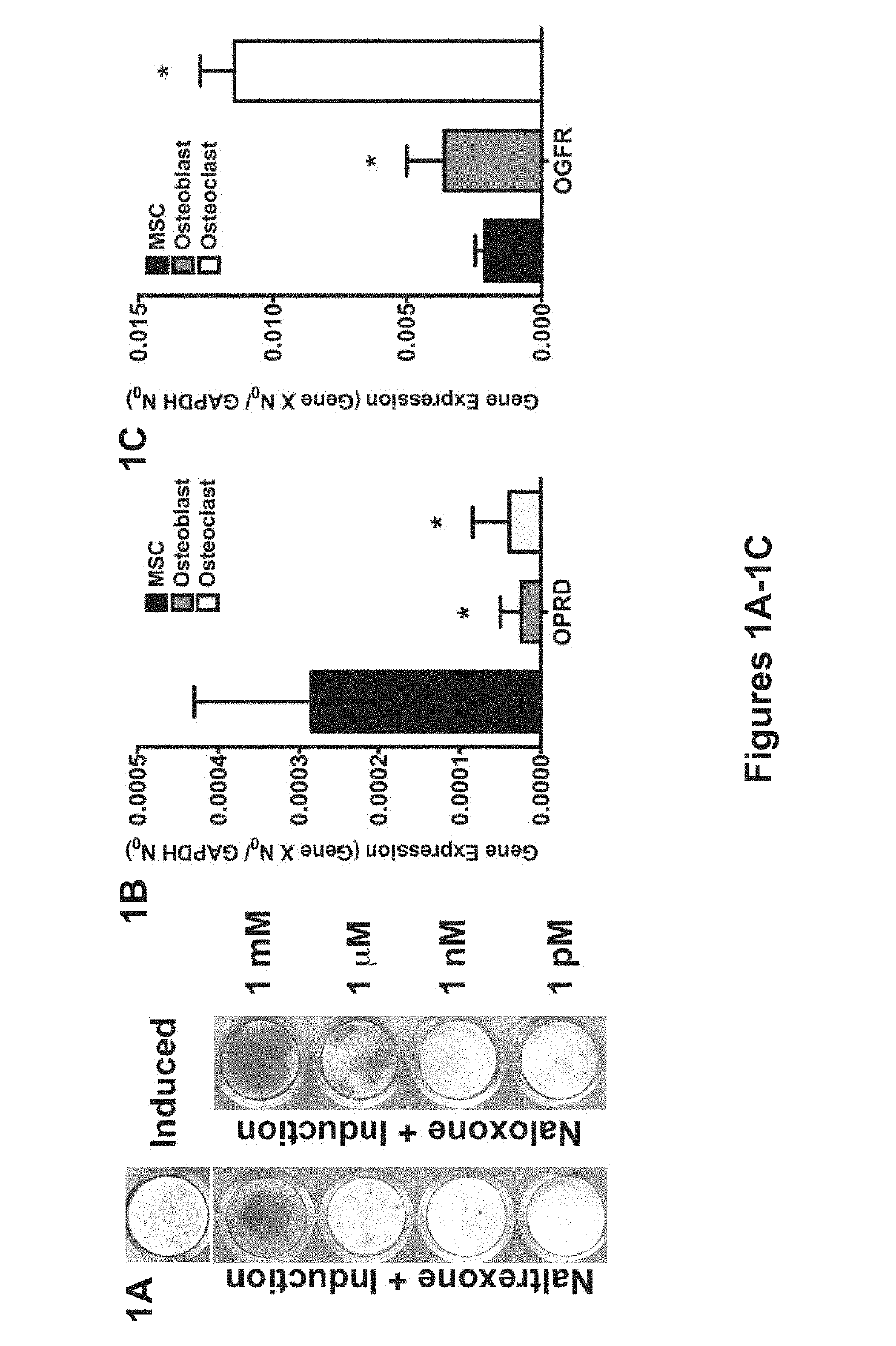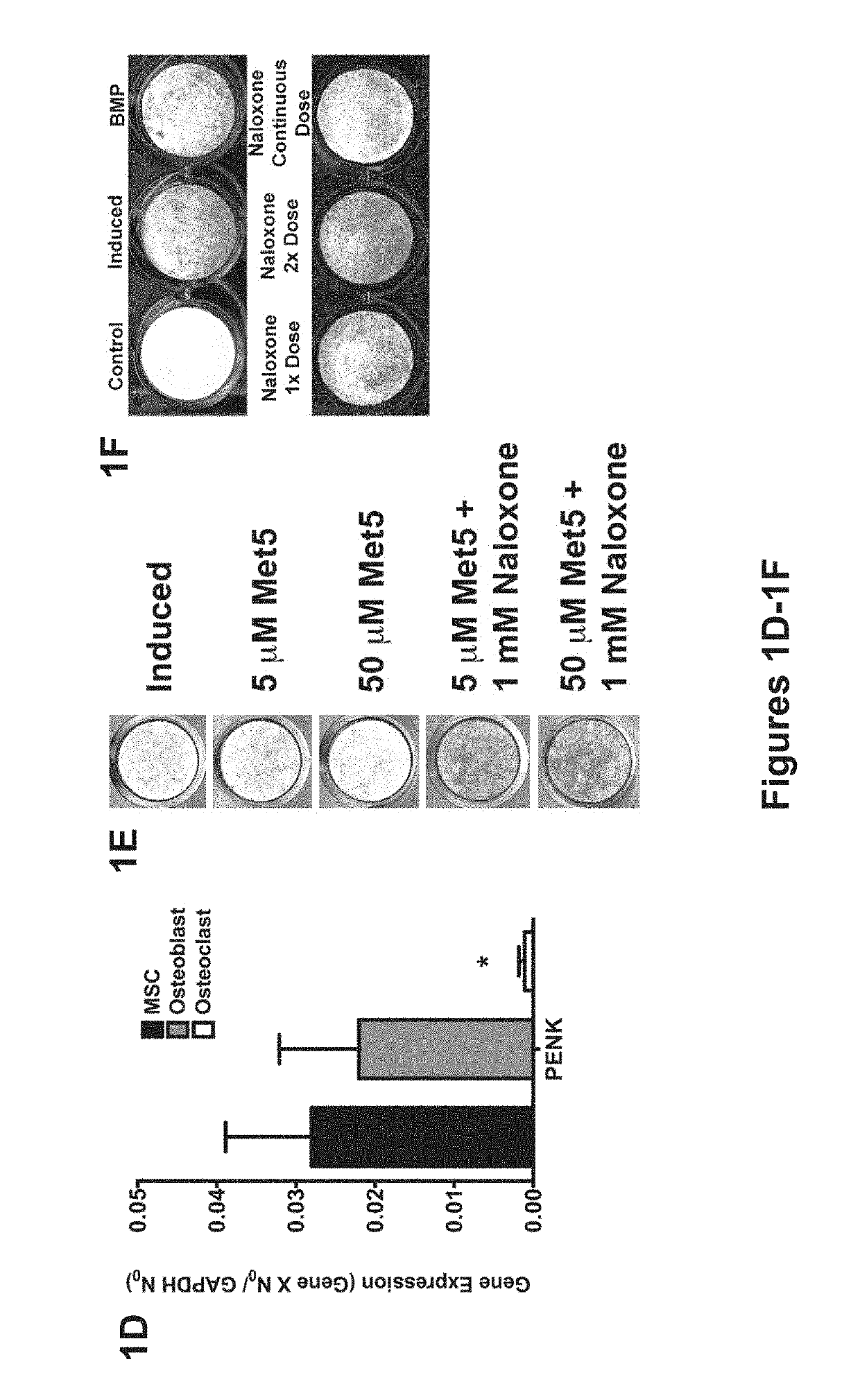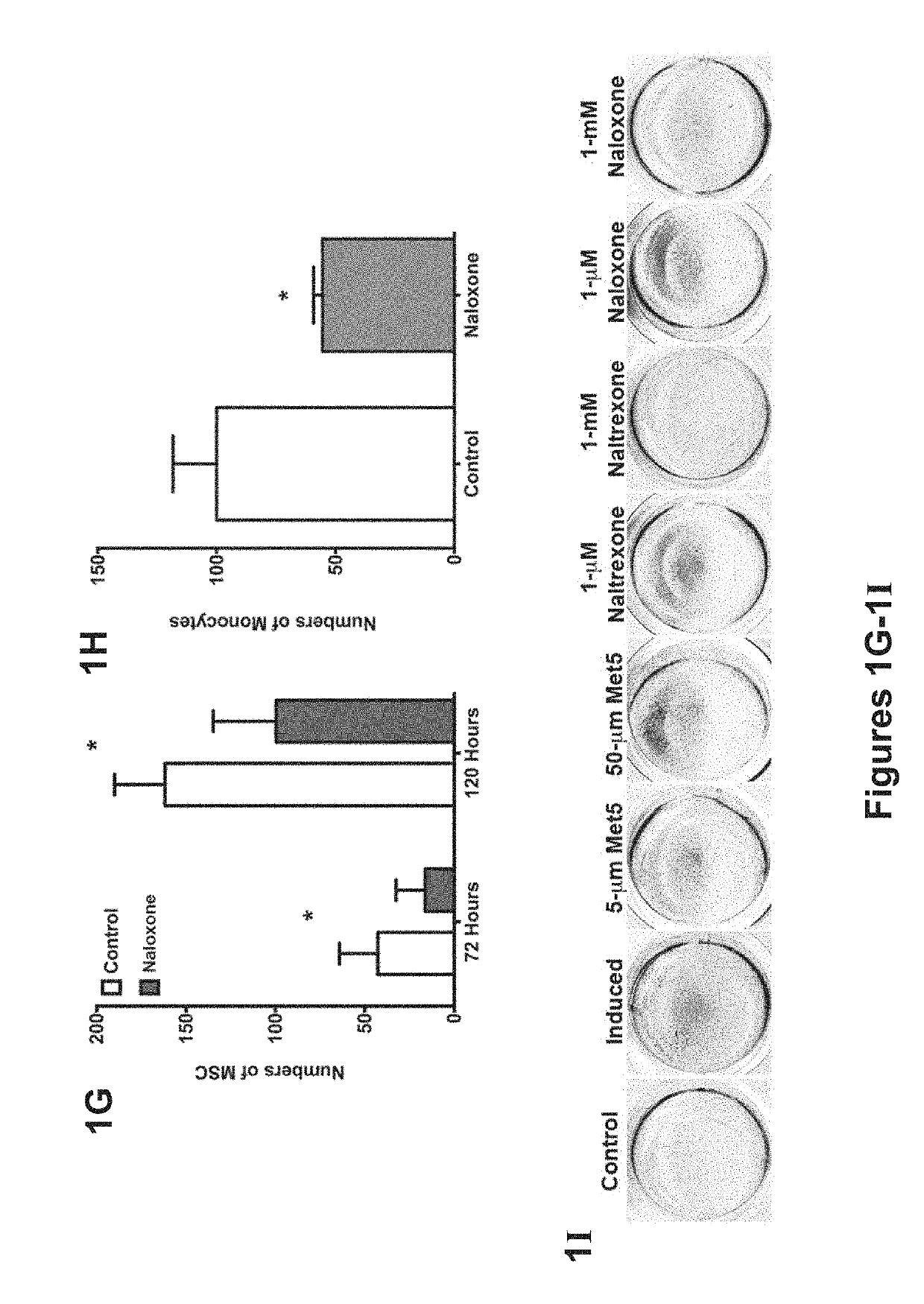Compositions and methods to promote bone formation
a technology applied in the field of compositions and methods to promote bone formation, can solve the problems of difficult application, high cost, and high risk of tumorigenesis in patients with bmp based therapies intended to generate bone, so as to reduce bone destruction, promote bone formation, and promote bone formation
- Summary
- Abstract
- Description
- Claims
- Application Information
AI Technical Summary
Benefits of technology
Problems solved by technology
Method used
Image
Examples
example 1
tagonists Regulate Bone Formation and Re-absorption
[0060]Methods: Human bone marrow was collected from consenting adult patients undergoing either an elective primary proximal femoral total hip arthroplasty or elective primary distal femoral total knee arthroplasty (n=6, mean age 65) as a part of an IRB approved study. Human MSC were derived from the adherent fraction of cells derived from each whole bone marrow aspirate collected, while the monocyte population was collected from the non-adherent fraction of the bone marrow. The monocyte fraction was enriched through sub-culture with 100-ng / mL recombinant human macrophage colony-stimulating factor (MCSF; Wyeth). In parallel experiments described below, the femurs from 3-week (n=10) and 16-week (n=20) old male mice were collected and then the bone marrow was flushed from the femur according to the following: A 21-gauge needle was inserted into the femoral intramedular canal after the removal of the proximal and distal ends of the fem...
example 2
Antagonists do not Stimulate Sarcoma Tumor Proliferation Despite OGFR Gene Expression in Sarcoma Cells
[0090]Methods:
[0091]Human bone marrow was collected from consenting adult patients undergoing either an elective primary proximal femoral total hip arthroplasty or elective primary distal femoral total knee arthroplasty (n=6, mean age 65) as a part of an IRB approved study. Human MSC were derived from the adherent fraction of whole bone marrow aspirates. Ewing's sarcoma tumor cells (RDES, Hs822 and Hs863) and SaOS2 osteosarcoma tumor cells were obtained from ATCC. Cells were maintained in Dulbecco's Modification of Eagle's Media (DMEM) containing 10% fetal calf serum (v / v) and 1% penicillin-streptomycin-glutamine (PSG; Cellgro, Mediatech).
[0092]Gene Expression Analysis:
[0093]MSC, osteoblasts and adipocytes derived from human bone marrow were assayed for changes in gene expression. In parallel, osteoclasts derived from human monocytes were also assayed for changes in myeloid gene exp...
PUM
 Login to View More
Login to View More Abstract
Description
Claims
Application Information
 Login to View More
Login to View More - R&D
- Intellectual Property
- Life Sciences
- Materials
- Tech Scout
- Unparalleled Data Quality
- Higher Quality Content
- 60% Fewer Hallucinations
Browse by: Latest US Patents, China's latest patents, Technical Efficacy Thesaurus, Application Domain, Technology Topic, Popular Technical Reports.
© 2025 PatSnap. All rights reserved.Legal|Privacy policy|Modern Slavery Act Transparency Statement|Sitemap|About US| Contact US: help@patsnap.com



